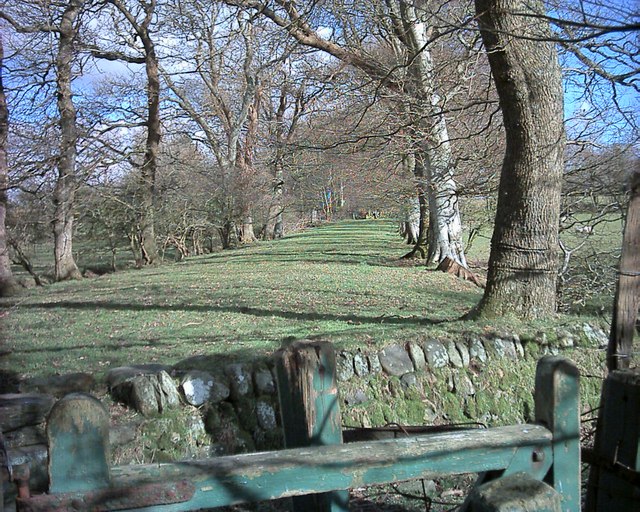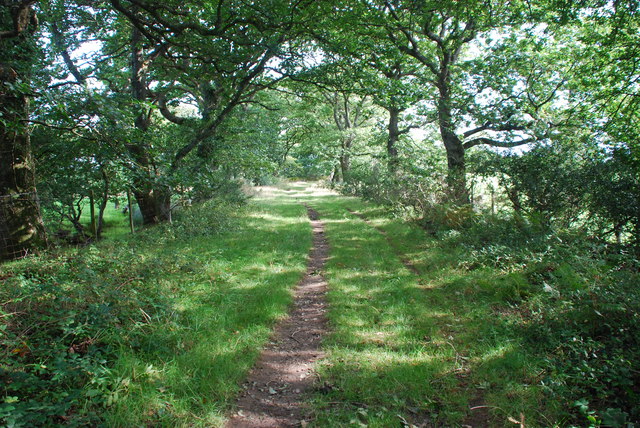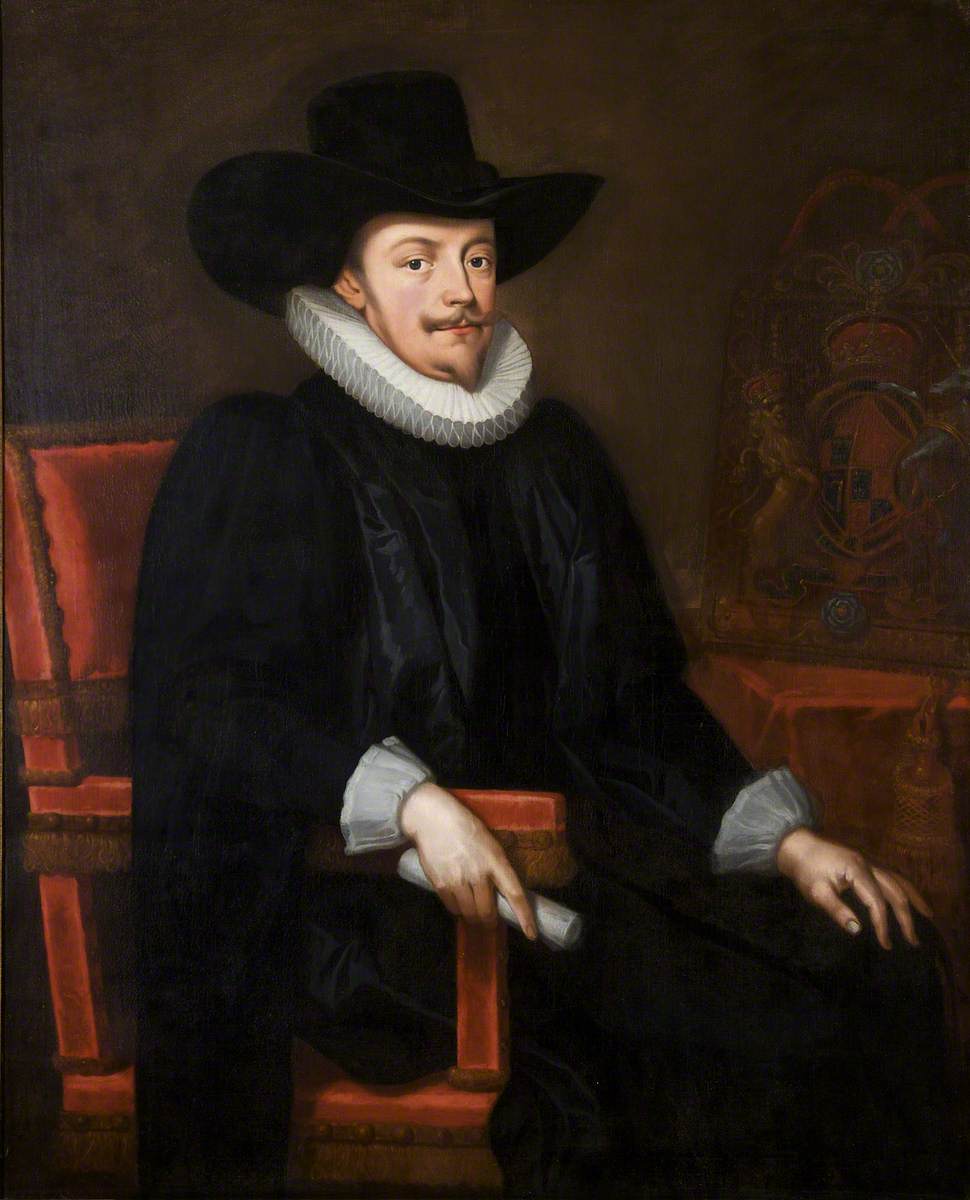|
Chwilog
Chwilog is a village in Eifionydd on the Llŷn Peninsula in the Welsh county of Gwynedd. It forms part of the community of Llanystumdwy. The name means 'abounding in beetles' and was perhaps transferred from an earlier name of the river (or a part of it). It had a population of 640 as of the 2011 UK census, with 78% born in Wales. Village The village is fairly linear, built up around the B4354 which used to be a turnpike/toll road crossing the peninsula to Porthdinllaen. The Afon Wen or its original name Afon Carrog flows through the lower part of the village on its way to the sea at Afonwen, less than away. Y Lôn Goed Nearby is Y Lôn Goed, a tree-lined path, first nicknamed by the local population, then made well known due to its reference in "Eifionydd" a poem by R. Williams Parry. It was originally named 'Ffordd Maughan' (Maughan Way) after John Maughan, land commissioner for Sir Thomas Mostyn (1817-1828). It is a wide tree-lined avenue created in the 18th century f ... [...More Info...] [...Related Items...] OR: [Wikipedia] [Google] [Baidu] |
Llŷn Peninsula
The Llŷn Peninsula ( cy, Penrhyn Llŷn or , ) extends into the Irish Sea from North West Wales, south west of the Isle of Anglesey. It is part of the historic county of Caernarfonshire, and historic region and local authority area of Gwynedd. Much of the eastern part of the peninsula, around Criccieth, may be regarded as part of Eifionydd rather than Llŷn, although the boundary is somewhat vague. The area of Llŷn is about , and its population is at least 20,000. Historically, the peninsula was travelled by pilgrims en route to Bardsey Island (Welsh: ''Ynys Enlli''), and its relative isolation has helped to conserve the Welsh language and culture, for which the locality is now famous. This perceived remoteness from urban life has lent the area an unspoilt image which has made Llŷn a popular destination for both tourists and holiday home owners. Holiday homes remain contentious among locals, many of whom are priced out of the housing market by incomers. From the 1970s to the 199 ... [...More Info...] [...Related Items...] OR: [Wikipedia] [Google] [Baidu] |
Llanystumdwy
Llanystumdwy is a predominantly Welsh-speaking village, community and electoral ward on the Llŷn Peninsula in Wales. It lies in the traditional county of Caernarfonshire but is currently administered as part of the unitary authority of Gwynedd. It is not regarded as being part of Llŷn, but as belonging instead to the ancient commote of Eifionydd on the Cardigan Bay coast, where it has its own beach. The community includes the villages of Chwilog, Afon Wen, Llanarmon, and Llangybi, plus the hamlets of Rhoslan and Pencaenewydd. Description The village lies between Criccieth and Pwllheli at the point where the A497 crosses the Afon Dwyfor. It had a population of 1,949 in 2001 and 2,080 in 2011. David Lloyd George, the last Liberal Party leader to be British Prime Minister, was brought up in Llanystumdwy and lived there until he was 16. His grave in the village was designed by Clough Williams-Ellis, creator of the Italianate village of Portmeirion, across Cardigan Bay, who a ... [...More Info...] [...Related Items...] OR: [Wikipedia] [Google] [Baidu] |
Eifionydd
Eifionydd () is an area in north-west Wales covering the south-eastern part of the Llŷn Peninsula from Porthmadog to just east of Pwllheli. The Afon Erch forms its western border. It now lies in Gwynedd. The commote of Eifionydd formed the northern half of the former minor kingdom of Dunoding within the Kingdom of Gwynedd. It traditionally took its name from Eifion, son of Dunod (who gave his name to the cantref) and grandson of Cunedda Wledig. The chief centre of the commote was at Criccieth, although there may have been an earlier royal residence at Dolbenmaen. Although it is not currently a unit of local government, the name is still in common use for the region. It includes the villages of Chwilog, Abererch, Llanaelhaearn, Pencaenewydd, Llangybi, Llanystumdwy, Llanarmon, Rhoslan, Pentrefelin, Penmorfa, Garndolbenmaen, Bryncir and Pantglas. R. Williams Parry's poem ''Eifionydd'' contrasts rural Eifionydd with the bustling slate quarries of Dyffryn Nantlle. Refere ... [...More Info...] [...Related Items...] OR: [Wikipedia] [Google] [Baidu] |
Afon Wen
Afon Wen is a small hamlet on the Llŷn peninsula in the Welsh principal area of Gwynedd. Location It is located at the mouth of the Afon Wen river, half a mile from the village of Chwilog and midway between Pwllheli and Cricieth. History & Amenities Afon Wen railway station was formerly a junction station on the Cambrian Coast Line, from where a connection could be made via the Carnarvonshire Railway (later LNWR and LMS) to the north coast at Caernarfon. For many people the name of the place is synonymous with that line, as in the song ''Trên i Afon Wen'' by Welsh pop star Bryn Fôn. The line was closed in 1965, and the track lifted. Part of the line, from Caernarfon to Dinas, is now part of the route of the newly re-opened Welsh Highland Railway. The section from Caernarfon to Bryncir has been converted into a footpath/cycleway that forms part of the National Cycle Network Route 8 (NCN8) and is known as Lôn Eifion. See also *Caernarvon railway station Caerna ... [...More Info...] [...Related Items...] OR: [Wikipedia] [Google] [Baidu] |
Lôn Goed
Lôn Goed, also known as Y Lôn Goed, is a rural lane in Eifionydd, Gwynedd, Wales. Many Welsh writers have referred to it, including the poet R. Williams Parry. It is named after the two rows of trees either side of the lane. Lôn Goed starts in the hamlet of Afon Wen, on the A497 main road about half a mile to the south of Chwilog and half-way between Cricieth and Pwllheli. Afon Wen lies on a river of the same name, near where it reaches the sea. The lane was created between 1819 and 1828 in order to promote the carriage of limestone and peat Peat (), also known as turf (), is an accumulation of partially decayed vegetation or organic matter. It is unique to natural areas called peatlands, bogs, mires, moors, or muskegs. The peatland ecosystem covers and is the most efficient .... It runs for about five miles, at first north-east then in a northerly direction, from Afon Wen to Hendre Cennin (Mynydd y Cennin). It is also referred to locally as "Lôn Môn", a ... [...More Info...] [...Related Items...] OR: [Wikipedia] [Google] [Baidu] |
Agricultural Lime
Agricultural lime, also called aglime, agricultural limestone, garden lime or liming, is a soil additive made from pulverized limestone or chalk. The primary active component is calcium carbonate. Additional chemicals vary depending on the mineral source and may include calcium oxide. Unlike the types of lime called quicklime (calcium oxide) and slaked lime (calcium hydroxide), powdered limestone does not require lime burning in a lime kiln; it only requires milling. All of these types of lime are sometimes used as soil conditioners, with a common theme of providing a base to correct acidity, but lime for farm fields today is often crushed limestone. Historically, liming of farm fields in centuries past was often done with burnt lime; the difference is at least partially explained by the fact that affordable mass-production-scale fine milling of stone and ore relies on technologies developed since the mid-19th century. Some effects of agricultural lime on soil are: * it increa ... [...More Info...] [...Related Items...] OR: [Wikipedia] [Google] [Baidu] |
David Lloyd George
David Lloyd George, 1st Earl Lloyd-George of Dwyfor, (17 January 1863 – 26 March 1945) was Prime Minister of the United Kingdom from 1916 to 1922. He was a Liberal Party politician from Wales, known for leading the United Kingdom during the First World War, social reform policies including the National Insurance Act 1911, his role in the Paris Peace Conference, and negotiating the establishment of the Irish Free State. Early in his career, he was known for the disestablishment of the Church of England in Wales and support of Welsh devolution. He was the last Liberal Party prime minister; the party fell into third party status shortly after the end of his premiership. Lloyd George was born on 17 January 1863 in Chorlton-on-Medlock, Manchester, to Welsh parents. From around three months of age he was raised in Pembrokeshire and Llanystumdwy, Caernarfonshire, speaking Welsh. His father, a schoolmaster, died in 1864, and David was raised by his mother and her shoemaker brot ... [...More Info...] [...Related Items...] OR: [Wikipedia] [Google] [Baidu] |
Margaret Lloyd George
Dame Margaret Lloyd George (; 4 November 1864 – 20 January 1941) was a Welsh humanitarian and one of the first seven women magistrates appointed in Britain in 1919. She was the wife of Prime Minister David Lloyd George from 1888 until her death in 1941. Early life She was born on 4 November 1864 to Richard Owen, an elder of Capel Mawr of Criccieth, Caernarfonshire, a well-to-do Methodist farmer and valuer. She was educated at Dr Williams' School for Girls, Dolgellau. Marriage and children On 1 January 1888, she married Lloyd George. Her father initially disapproved of him. They had five children: * Richard, later 2nd Earl Lloyd-George of Dwyfor (1889–1968) wrote a book about his mother ''Dame Margaret: The Life Story of His Mother''. * Mair Eluned (1890–1907) * Lady Olwen Elizabeth Carey Evans, (3 April 1892 – 2 March 1990); she married Major Sir Thomas John Carey Evans (died 25 August 1947) in 1917 at London's Welsh Baptist Chapel. She was the grandmother of ... [...More Info...] [...Related Items...] OR: [Wikipedia] [Google] [Baidu] |
Primary School
A primary school (in Ireland, the United Kingdom, Australia, Trinidad and Tobago, Jamaica, and South Africa), junior school (in Australia), elementary school or grade school (in North America and the Philippines) is a school for primary education of children who are four to eleven years of age. Primary schooling follows pre-school and precedes secondary schooling. The International Standard Classification of Education considers primary education as a single phase where programmes are typically designed to provide fundamental skills in reading, writing, and mathematics and to establish a solid foundation for learning. This is ISCED Level 1: Primary education or first stage of basic education.Annex III in the ISCED 2011 English.pdf Navigate to International Standard Classification of Educati ... [...More Info...] [...Related Items...] OR: [Wikipedia] [Google] [Baidu] |
John Owen (Royalist)
Sir John Owen of Clenennau (1600–1666), was a Welsh landowner best known for his service as a Royalist officer during the English Civil War, during which he held a variety of commands in North Wales. The Earl of Clarendon, in his history of the war, noted that Owen described himself as "a plain gentleman of Wales, who had been always taught to obey the King"; by contrast Cromwell referred to Owen in passing as "a violent man, now got into trouble enough". Following the Second Civil War he was sentenced to death in 1649 for treason and the murder of a Parliamentarian official, William Lloyd, but was later reprieved. At the Restoration he was made Vice-Admiral of North Wales, dying in 1666. Early life Owen was born in around 1600 in the remote district of Eifionydd in north-west Wales. He was the eldest son of John Owen of Bodsilin, Anglesey (d.1613), secretary to Francis Walsingham. His mother, Elin Maurice, was the granddaughter and heiress of the politician Sir William Mau ... [...More Info...] [...Related Items...] OR: [Wikipedia] [Google] [Baidu] |
Richard Vaughan (of Corsygedol)
Robert Vaughan (by 1606 - 19 July 1636) was a Welsh politician who sat in the House of Commons from 1628 to 1629. Vaughan was the son of William Vaughan of Plas-hen and his wife Ann, daughter and heir of Richard Vaughan of Talhenbont, Llanystumdwy, Caernarfonshire. In 1628, he was elected Member of Parliament for Merioneth and sat until 1629 when King Charles decided to rule without parliament for eleven years. Vaughan was so corpulent and bulky that it was necessary to open the large door of the House of Commons to let him in "which was seldom opened except when the Usher of the Black Rod summoned the members to appear before the House of Lords. When the door was opened the Lords used to whisper that Black Rod or the Welsh Mayor was coming." Vaughan died at Corsygedol in 1636 of complications of an operation to reduce his girth. He was aged about 30 at the time and had been serving as Sheriff of Merioneth. He had married, by a settlement dated 12 April 1616, Elizabeth Owen, ... [...More Info...] [...Related Items...] OR: [Wikipedia] [Google] [Baidu] |







_(gcf06194).jpg)

